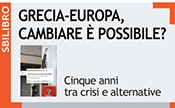Ultimi link in questa sezione
Un penny da un milione di dollari
Every summer, several financial firms competing to get the banking business of the world’s mega millionaires release what amounts to scorecards on global wealth. These data-packed reports tally the current number of our international rich and super-rich, by nation and region.
World Wealth Report 2010 is the most comprehensive of these scorecards. It's got some fascinating details about the planet's wealthiest of the wealthy, those households worth at least $30 million--that's not counting their primary residence and "collectibles."
These "ultra-high-net worth" households make up less than 1 percent of the global millionaire total, yet in 2009 and 2008 they held more than a third of combined global millionaire wealth. In other words, the global financial crash that mega-millionaire speculation triggered has ended up concentrating even more wealth in mega millionaire pockets.
The Merrill Lynch and Capgemini researchers who prepared this report also offer some lusciously revealing information about what they call "passion investing," the vast sums the rich plow into everything from country club memberships and yachts to jewelry and fine art.
Global millionaires, they say, "returned to passion investments in 2009," but the overall volume of these passion investments still hasn't rebounded all the way back to pre-financial crash levels.
That complete rebound, the report adds, may come shortly, since "auction houses, luxury goods makers, and high-end service providers all reported signs of renewed demand toward the end of 2009."
One sign of that increased demand: Late last year, an antique penny--a 1795 one-cent piece--went at auction for $1.3 million. That marked the first time a penny had ever gone for over $1 million.
This resurgence in "passion investment" illustrates the latest World Wealth Report's overall theme: The global millionaire "segment regained ground despite weakness in the world economy."
We have that weakness because average consumers still don't have the buying capacity to get national economies going again. And those average consumers don't have that buying capacity because income and wealth are getting even more concentrated at the top. An antique penny, thanks to that concentration, can now fetch more than a million dollars.
But imagine if our wealth were more equally shared. Imagine that the $1.3 million that went for a 1795 penny had been sitting instead in the pockets of average consumers. Over 1,500 of those consumers could have bought brand-new energy-efficient refrigerators with that $1.3 million.
And what do you suppose would do our economy--and our world--more good, one deep pocket spending $1.3 million on a penny or 1,500 households buying new energy-efficient refrigerators?
The good folks at Merrill Lynch and Capgemini will most likely never ask that question. We should.










